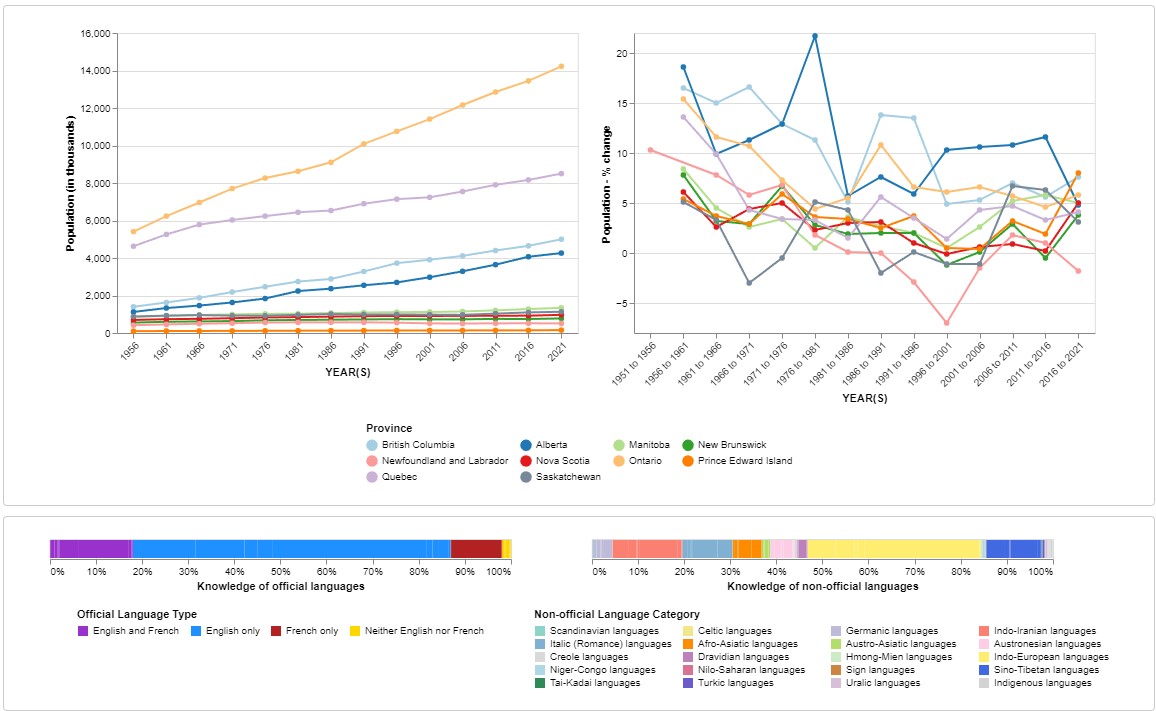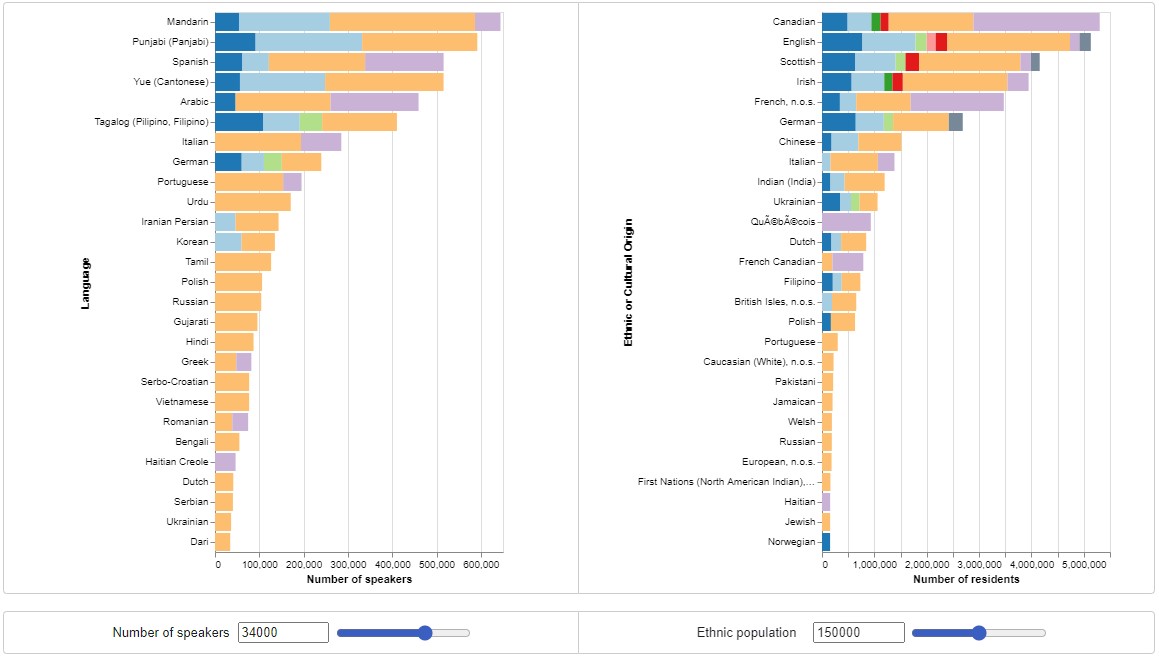Spring Semester 2023
Group final project
Canada's Language Diversity Visualised

Overview
An tool for investigating language distribution across Canada's multicultural society and how immigration patterns affect a region's characteristics.
Role
Project planning and writing, data cleaning, visualisation code
Skills
Javascript, Python


